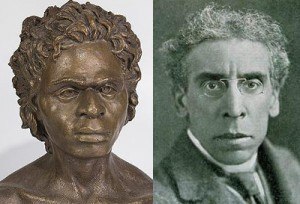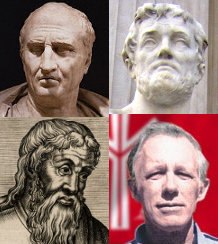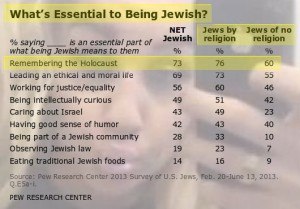Podcast: Play in new window | Download
Concluding this brief series with some odds and ends, reviewing and connecting what has been covered with a few new points.
Eric Goldstein’s book, The Price of Whiteness: Jews, Race, and American Identity, documents and tries to explain, from a jewish point of view, the complete about face in attitudes about race which occurred during the 20th century, specifically the shift jews made among themselves. Our concern is how they have since manipulated Whites to toe their “anti-racist” line.
During the 19th century and into the 20th Whites were just beginning to appreciate the depth and breadth of their roots, their biological relationship with each other, but also to recognize their common parasite. They were beginning to appreciate just how biologically and psychologically distinct and implacably alien and hostile the jews are and have always been. How the jews have in fact insisted upon being and remaining this way.
This growing understanding of their roots, this racial consciousness, was not fabricated out of nothing, but was based on evidence gathered from study and research – archeology, linguistics, biology. It was spreading not only among the elite, the intelligensia, but was beginning to trickle out to the masses too.
In the first half of the 20th century Madison Grant’s Passing of the Great Race and Lothrop Stoddard’s Rising Tide of Color were popular books. White understanding of race was increasing.
In 1933 the national socialists took power in Germany, and for the first time a White European government officially and definitively answered the question, “who is us”, and pursued policies guided by the principle, “what’s best for us”, racially. Expressing a collective group-consciousness that for the first time approximated (and took into account the competitive and adversarial nature of) the kind of collective awareness of identity and interests that the jews had been practicing for millenia among Europeans.
Even before this, before this racial consciousness had fully coallesced into a national socialist government, those jews most aware of their collective interests recognized this burgeoning understanding among their host as a threat to the jews. They saw that jews embracing race was not going to be good for the jews in the long run.
Their efforts to thwart this rising consciousness pre-date the founding of national socialism. We’ve mentioned Franz Boas and Maurice Fishberg, whom were just two of the more prominent names among the many jews who ultimately co-opted and derailed race science.
By the time national socialism rose to power in Germany the jews had come to the consensus that race was definitely bad for the jews, and they were throwing all their efforts into an idea, a movement that would eventually be called “anti-racism”.
“Anti-racism” is a jewish contruct, though they have tried to generalize it and otherwise obscure this. As many Whites are beginning to realize, “anti-racism” is really just anti-Whitism. It is a movement, a perverse way of thinking about race that doesn’t abolish the idea of race, but simply inverts White consciousness – making White bad and non-White good. It was inspired and continues to be led and driven by jews who think that this is what’s best for the jews.
Let’s return one last time to Goldstein’s book, where he describes jewish attitudes in America during the first decade of the 20th century. Unlike their “anti-racism” today, back then jews openly identified themselves as a race, because they thought that was what was best for the jews. As Goldstein put it, race “fit the needs of jews” “in the larger white world”.
This bit, from page 107, is part of the discussion of Simon Wolf’s (the jew lobbyist who knew every president between Lincoln and Wilson) appearance before the Immigration Commission in 1909, where he was questioned by Senator Henry Cabot Lodge on the issue of whether jews are a race or religion. Wolf infamously denied their racial nature and instead conflated jewishness with religion.
In the wake of the hearing jews sympathetic to a racial view of jewishness denounced Wolf for what they saw as an abandonment of jewish pride before the commission, and took advantage of his poor performance to argue that his case had no defensible foundation. One rabbi wrote to the Jewish Exponent of Philadelphia that Senator Lodge was a better jew than Wolf, because he did not try to deny the existence of the jewish race. Zionists especially attacked Wolf’s efforts, arguing that if anything could stimulate anti-jewish sentiment, it was not the affirmation of racial identity but the “shifting, unmanly and undignified pretense of representatives of a people, who against fact and history, and against their own private convictions, disown the racial and national birthright.”
The Zionist source is reprinted in a book I mentioned briefly in Part 1 of this series, Jews and Race: Writings on Identity and Difference, 1880-1940. It covers roughly the same period and attitudes as Goldstein’s book, but offers less narrative and more in the way of original sources. Among them is an article from a 1910 issue of Maccabaean, There is No Jewish Race!, which contains the criticism of Wolf quoted above, and more, including this:
We believe we speak in the name of the entire jewish people when we say that the jewish people, native-born and naturalized in this country, are not ashamed to have themselves or their brethren classified as racial jews
As previously mentioned, the authors of Henry Ford’s The International Jew – The World’s Foremost Problem also discussed Wolf’s testimony. In October 1920 they wrote:
From the extracts given in this article, four matters become very clear:
First, the Jew is opposed to any restrictive legislation against his entrance into a country.
Second, the Jew is opposed to any racial classification of himself after he has entered a country.
Third, the Jewish argument to the Gentile authorities is that the Jew represents religion and not race.
Fourth, that at least one indication has appeared in which the Jew has one view to present to the Gentiles, and another which he cherishes among his own people, on this question of Race.
Another point might be made, as this: when the authorities disregard as untenable the argument of “religion, not race,” the Jewish spokesmen fall back on the fact that their organizations don’t want certain things and won’t have certain things—argument or no argument, commission or no commission.
The Jewish lobbyists had their way. There is no enumeration of Jews in the United States. There are 46 other classifications, but none for the Jew. The Northern Italians are distinguished in the records from the Southern Italians; the Moravians are distinguished from the Bohemians; the Scotch from the English; the Spanish-American from the Spanish-European; the West Indians from the Mexicans—but the Jew is not distinguished at all.
None of the other races made objection.
They were noticing certain consistent traits of the jews.
First, how the jews demand and often get special, unique, exceptional treatment. Contra Goldstein, there is no liability, no price connected to their privilege.
Jews demand that there be no restrictions on jews, effectively imposing restrictions on their host.
What seems to be duality, hypocrisy, or double standards, one story or standard for non-jews, another for themselves, is really just one standard: what’s best for the jews.
The International Jew was a well-known and popular book in 1920s America. It is valuable because it documents the White attitude about race and the jews at that time. But in many respects Ford and his TIJ writers were too optimistic, too conciliatory. They regarded the jews as peers, social and political equals, or at least saw them as having the potential to be so.
They maintained a pretense that they were trying to appeal to and influence the jews, and called for them to step forward and challenge their leaders. This was a weak rhetorical device that was more likely actually aimed at stirring their more “liberal”-minded White readers to resent the fact that jews were not showing any interest in participating in their “liberal” American project as peers, but were instead well aware of and committed to pursuing their own narrow identity and interests.
At that point in time Ford and Americans in general believed the Anglo-Saxon founding stock still ruled America, but were also generally unaware of the threat posed to them by the jews. A half-year after the piece above was published, the TIJ writers seemed to have come to realize that the conflict and its stakes were more dire than they had at first let on. In May of 1921 they wrote:
Yes, let it be agreed; if the Jewish idea is the stronger, if the Jewish ability is greater, let them conquer; let Anglo-Saxon principles and Anglo-Saxon power go down in ruins before the Tribe of Judah. But first let the two ideas struggle under their own banners; let it be a fair struggle. It is not a fair fight when in the movies, in the public schools, in the Judaized churches, in the universities, the Anglo-Saxon idea is kept away from Anglo-Saxons on the plea that it is “sectarian” or “clannish” or “obsolete” or something else. It is not a fair fight when Jewish ideas are offered as Anglo-Saxon ideas, because offered under Anglo-Saxon auspices. Let the heritage of our Anglo-Saxon-Celtic fathers have free course among their Anglo-Saxon-Celtic sons, and the Jewish idea can never triumph over it, in university forum or in the marts of trade. The Jewish idea never triumphs until first the people over whom it triumphs are denied the nurture of their native culture.
Judah has begun the struggle. Judah has made the invasion. Let it come. Let no man fear it. But let every man insist that the fight be fair. Let college students and leaders of thought know that the objective is the regnancy of the ideas and the race that have built all the civilization we see and that promise all the civilization of the future; let them also know that the attacking force is Jewish.
That is all that will be necessary. And it is against this that the Jews protest. “You must not identify us,” they say, “you must not use the term ‘Jew'” Why? Because unless the Jewish idea can creep in under the assumption of other than Jewish origin, it is doomed. Anglo-Saxon ideas dare proclaim themselves and their origin. A proper proclamation is all that is necessary today. Compel every invading idea to run up its flag!
Throughout TIJ we find not only various aspects of jewish influence described but also jewish personality traits. They identified the jews as a race with persistent, collective, racial traits.
One of those characteristic traits is how jews alternate between openly announcing themselves and bragging about their influence, and yet also disguise themselves and deny their powerful influence. This is no mystery. They do whichever is good for the jews in a given situation.
Another characteristic trait is how the jews swarm collectively to self-righteously attack those who take notice of their activities and oppose them. Ford too was subjected to this treatment, and it continues to this day. Some examples of jewish attitudes are attached as “Editorial Reviews” to the bookseller Amazon’s page for The International Jew:
A Message from the Anti-Defamation League
The International Jew, authored by Henry Ford, is blatant anti-Semitism. It portrays Jews as monolithic, malicious schemers plotting to control the planet. “If there is one quality that attracts Jews, it is power,” the book states. “Wherever the seat of power may be, thither they swarm obsequious.” It does not portray Jews as individuals but as a single-minded, calculating cabal. Conflict among Jews, no matter how real, is painted as a sly trick, part of the Jewish plot. The book blames nearly all the troubles it saw in American society of the time on Jews. “Whichever way you turn to trace the harmful streams of influence that flow through society, you come upon a group of Jews,” it claims. Even problems with the “national pastime” are attributed to Jewish influence: “If … fans … wish to know the trouble with American baseball, they have it in three words … too much Jew.”
Never mind baseball. The trouble with America, then and now, is too much jew.
Note how jews seem to relish criticism, how they so eagerly repeat it, without denial. Instead they embellish and distort their critics in a telling way that reflects their own view of the world around them. Theirs is a world populated not with individuals but with jews mindlessly antagonized by “anti-semites”, a single-minded, calculating cabal of malicious schemers plotting to control the planet.
The jews blame all the troubles of jews then, now, and into the future on “anti-semitism”. And yet what they call “anti-semitism” is simply anti-parasitism, the host’s recognition and resentment of jewish infiltration, manipulation and exploitation. It is a reaction to the harm caused by the jews pursuing their own interests.
Interestingly, jewish anti-“anti-semitism”, combating their host’s anti-parasitism, pre-dates their “anti-racism”. Today these two things are seen as connected, with “anti-semitism” being a special form of “racism”, a specific awareness of the jews as racially distinct and hostile.
A second review at Amazon is more of the same. Because the jews ultimately prevailed over the fair-minded Anglo-Saxons with fraud they still can’t be honest about what they did. Instead they malign Ford, faulting him for thinking and behaving as they actually do:
The best lesson one can draw from this book is that being a great industrialist does not necessarily convey expertise in other subjects. The International Jew began as a four-volume set of pamphlets, published by Henry Ford in the 1920s, in which he attempted to justify his anti-Semitic views by couching his beliefs not as racism but as “fact.”
What follows is an unwieldy and meandering set of essays in which Ford uses pseudo-science and third-rate sociology (as well as talk of conspiracy and “ancient prophecy”) in an attempt to scientifically prove that “the Jew” is the biggest problem holding the world back.
If something nice can be said about this book, it’s that Ford is absolutely thorough in his accusations–perhaps an illustration of the kind of attention to detail that made him rise to such heights as a businessman. In his essays, he accuses the Jewish people of just about everything under the sun: fomenting Communism, gambling on baseball, making “Jewish Jazz” our national music, even conspiring with Benedict Arnold. Ford may have done as much as anyone in history to propel American industry into the future, but his anti-Semitic ramblings would have us stepping back into the Dark Ages.
Here at the end I’d like to take the opportunity to point you to two brief but authoritative and well-presented explanations of the jews and race.
The first is a ten-minute video presentation by David Duke. Duke approach comes across as a contemporary version of the early TIJ, at least in his laying out of the facts and can’t-we-all-just-get-along attitude. Duke primariliy cites jews on the religion versus race question, and points out jewish hypocrisy in their attitudes about race and racial purity.
Kevin Strom’s recent podcast, Jewish Weakness, also discusses the jewish race and religion, but lays them out and puts them together in a way that provides a more complete understanding.
Strom asks, “Who are these people? And why do they do the things they do to us? The answer can be found in Jewish genes and Jewish memes.” He notes:
Thus we see that the memes of Jewish peoplehood began with lies — and it is my contention that these memes, these lies, have had a race-formation effect on those who adopted them, and that this race-formation effect has continued to operate even after the incorporation of non-Semitic genes into the Jewish gene pool.
No, the essence of Jewishness is the special “us versus them” mentality which is formalized in their Chosen People myth and which was necessary for their survival as a tiny group among the teeming masses of Egypt, Babylon, Rome, and America.
The key is this: In the first place, early Jews were those Semites to whom the ethnocentric and genocidal memes of what we now call the Old Testament were attractive. So even at the very earliest period at which Jews appear, we have a select, distinct, and peculiar group. Then, for thousands of years, the Jews were subjected to a rigorous process of genetic selection.
The Jews perceive any reaction against their presence in the host nations as persecution, and from their point of view perhaps it is persecution, since our reaction is against the only way of life they know, that of a parasite attached to a host. Our interests are irreconcilable.
To protect themselves from any reaction from the host population, the Jews promote the doctrine that there is no difference among the races, although among themselves they cherish the doctrine of not only the superiority but the actual divinity of their race.
The key, I think, is perception, which is to say consciousness. Strom’s conclusion:
The difference is that today the venue for Jewish exploitation and overt and covert rule is not just France or England or Palestine, but half or more of the civilized world. It is a global phenomenon and the burgeoning reaction to it is also global. There will be nowhere to “disappear to” this time. It’s probably true that “the 1%” is 99% Jewish, but that’s a lot less of an advantage when everyone knows it.
Joe Sobran observed in 1996 that:
Jewish control of the major media in the media age makes the enforced silence both paradoxical and paralyzing. Survival in public life requires that you know all about it, but never refer to it. A hypocritical etiquette forces us to pretend that the Jews are powerless victims; and if you don’t respect their victimhood, they’ll destroy you. It’s a phenomenal display not of wickedness, really, but of fierce ethnocentrism, a sort of furtive racial superpatriotism.
“Paralyzing”, and other such words people choose when they describe the jewish problem, indicate the host-parasite nature of the problem, even when it is not consciously acknowledged.
The furtive power of the jews is the apparent paradox to which Sobran refers. The two concepts – furtiveness and power – seem at odds, but are not really. Furtive power is another way of saying illegitimate or unpopular power. A power whose strength lies in remaining unrecognized and thus unopposed. The most pliable host is an unwitting host. The jews control the media because they must in order to survive as a collective, in order to put their ideas, their consciousness of their interests into their hosts’ heads. Also, to ensure that their host remains otherwise unaware, unconscious of its own interests. Unconscious of the manipulation and exploitation. Unconscious of the grievous harm being done by the jews.





